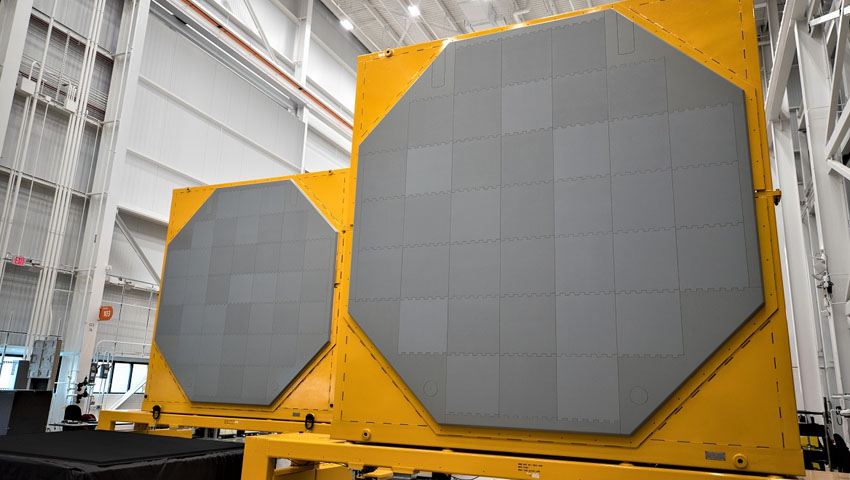Raytheon Missiles & Defense has successfully delivered the first AN/SPY-6(V)1 radar array for installation on the future USS Jack H. Lucas (DDG 125), the US Navy’s first Flight III guided-missile destroyer.
To continue reading the rest of this article, please log in.
Create free account to get unlimited news articles and more!
The SPY-6 family of radars performs simultaneous air, missile and surface defence on seven types of US Navy ships.
The 4.27-metre x 4.27-metre modular array was transported by truck from the company's automated 2,800-square-metre Radar Development Facility in Andover, Massachusetts, to Huntington Ingalls Industries shipyard in Pascagoula, Mississippi.
Captain Jason Hall, program manager for Above-Water Sensors for the US Navy's Program Executive Office for Integrated Warfare Systems, explained, “SPY-6 will change how the Navy conducts surface fleet operations. Our ships will be able to see farther, react quicker and defend against threats in a way we couldn't before.”
The SPY-6(V) family of radars delivers significantly greater range, increased accuracy, greater resistance to environmental and man-made electronic clutter, advanced electronic protection, and higher reliability than currently deployed radars.
Kim Ernzen, vice president of Naval Power at Raytheon Missiles & Defense said, “This is the start of what will be a steady stream of SPY-6 array deliveries to the shipyard.
“Threats to Navy ships are getting smaller and faster. SPY-6 will extend the Navy's reach against dangers like drones, ballistic missiles, aircraft and unmanned ships.”
The SPY-6 family is integrated, meaning they can defend against ballistic missiles, cruise missiles, hostile aircraft and surface ships simultaneously. They provide several advantages over legacy radars, including significantly greater detection range, increased sensitivity and more accurate discrimination.
Each variant uses the same hardware and software, and their construction is modular, making them more reliable and less expensive to maintain.
SPY-6 radars are built from individual ‘building blocks’ called Radar Modular Assemblies, or self-contained radars that come in 61cm x 61cm x 61cm boxes. Those boxes stack together to fit the mission requirements of any ship – a feature that makes the SPY-6 family the Navy’s first truly scalable radars.
Raytheon Technologies Corporation is an aerospace and defence company that provides advanced systems and services for commercial, military and government customers worldwide.
With 195,000 employees and four industry-leading businesses ― Collins Aerospace Systems, Pratt & Whitney, Raytheon Intelligence & Space and Raytheon Missiles & Defense ― the company delivers solutions that push the boundaries in avionics, cyber security, directed energy, electric propulsion, hypersonics, and quantum physics.
Stephen Kuper
Steve has an extensive career across government, defence industry and advocacy, having previously worked for cabinet ministers at both Federal and State levels.

 Login
Login








